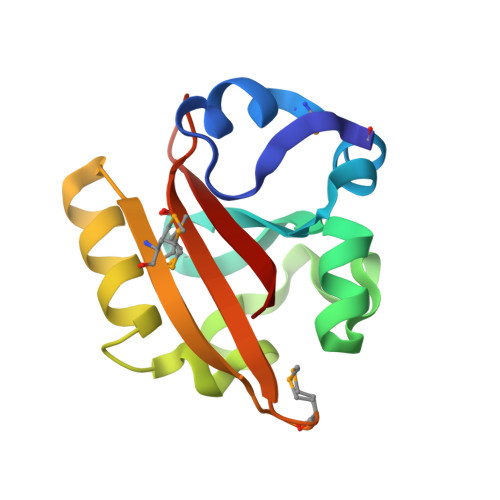Initial events in the photocycle of photoactive yellow protein.
Kort, R., Hellingwerf, K.J., Ravelli, R.B.(2004) J Biol Chem 279: 26417-26424
- PubMed: 15026418
- DOI: https://doi.org/10.1074/jbc.M311961200
- Primary Citation of Related Structures:
1UWN, 1UWP - PubMed Abstract:
The light-induced isomerization of a double bond is the key event that allows the conversion of light energy into a structural change in photoactive proteins for many light-mediated biological processes, such as vision, photosynthesis, photomorphogenesis, and photo movement. Cofactors such as retinals, linear tetrapyrroles, and 4-hydroxy-cinnamic acid have been selected by nature that provide the essential double bond to transduce the light signal into a conformational change and eventually, a physiological response. Here we report the first events after light excitation of the latter chromophore, containing a single ethylene double bond, in a low temperature crystallographic study of the photoactive yellow protein. We measured experimental phases to overcome possible model bias, corrected for minimized radiation damage, and measured absorption spectra of crystals to analyze the photoproducts formed. The data show a mechanism for the light activation of photoactive yellow protein, where the energy to drive the remainder of the conformational changes is stored in a slightly strained but fully cis-chromophore configuration. In addition, our data indicate a role for backbone rearrangements during the very early structural events.
Organizational Affiliation:
Laboratory for Microbiology, Swammerdam Institute for Life Sciences, University of Amsterdam, Nieuwe Achtergracht 166, 1018 WV Amsterdam, The Netherlands. rkort@science.uva.nl

















